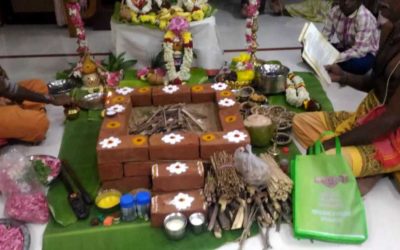UDAIPUR: Holi is still a fortnight away, but tribal women in selected blocks of Udaipur have no time to rest. Their busy hands have not a minute to spare as they have deadlines to meet for their hand-made herbal colours which has great demand in the market. Not only in Udaipur city, the four colour variants of ‘Vanraj’ brand are sold even in Jaipur, Delhi and Gujarat markets.
On Tuesday, an order of 65 kilogram of the herbal colours was dispatched to the Australian Embassy in New Delhi. The herbal colour making enterprise is an initiative of the forest department which began around 2010 with the help of the forest development and protection committees to encourage women self-help groups.
” Looking at the increasing consciousness and demand for safe colours, we took up the task at selected blocks. There were hardly 10-15 women in the initial years and we produced 2-3 quintal for the Holi season,” says O P Sharma, deputy conservator of forest and the project in-charge.
Now, herbal colours are being manufactured at Thamla Beri in Kotra, Dang and Malviya in Merpur, Kodiyat near Udaipur city, Chowkadiya and Jorma in Gogunda block. Around 125 women are engaged in these units and this year the production has already touched 35 quintal which is likely to cross over 50 quintal.
While the chemical-based ordinary colours are available at a meger price of around Rs 40-50 per kg in the markets, people are willing to pay as much as Rs 160 per kg for the herbal colours made by the tribal women.
“The synthetic and organic colours cause skin allergies, eye and ear infections and other significant health problems but our edible colours are made of dried leaves and flowers mixed with arrowroot flour base giving everlasting respite to people of all ill-effects,” Sharma explains. So even though a bit costlier, the herbal ones are a hit amid health conscious people as these are non toxic, soft, emit natural aroma and fragrance and 100% safe to play.
The colour making process is lengthy and time taking. The women go to the jungles daily to collect leaves that are used to make green colour, palash and rose for the pink colour and amaltash for making yellow powder. The flowers and leaves are boiled which extracts the colour from them. The water is then mixed with arrowroot flour and turned into a solid form that is dried for some time and later grinded into fine powder.
With the mixture of essence, the powder receives natural aroma which is later packed and ready for sale. Before a week to Holi, the colours are made available for sale to the public at popular junctions and markets across the city . So far it had been a seasonal business, but now the forest department has started getting enquiries from Maharashtra and Gujarat to meet requirements for festivals like Ganesh Chaturthi, Navratra etc.
TSFCCT performs Ganapathi Homam at Mahakali Temple
Secunderabad: On the occasion of 1st day of new financial year (2019-2020), Telengana State...




0 Comments